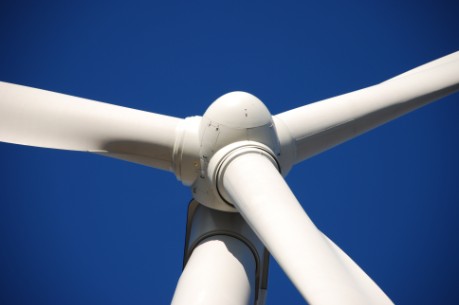Friday 26th October 2018, 2:35pm
Two new wind farm proposals are being opposed by Mountaineering Scotland because of their impact on areas of mountaineering interest.
An objection has already been lodged against a 26-turbine development in Glen Dye, on the Angus-Aberdeenshire border.
And a further objection is currently being prepared to oppose a 29-turbine scheme at Glenshero, adjacent to the controversial Stronelairg wind farm.
Mountaineering Scotland supports sustainable energy and opposes only those wind farm proposals that would be detrimental to the experience of Scotland’s mountain areas, and has objected to only a small proportion of proposals – around one in ten – that are potentially most damaging to Scotland's widely-valued mountain landscapes.
The Glen Dye development would consist of 26 turbines that would be 150m tall to the tip of the blade. The scheme would be visually very intrusive from the popular Clachnaben-Mount Battock ridge and Glen Dye walks and would also be visible from the upper Glen Esk hills, which have so far avoided impact from wind farms. It would be apparent even from the wild land around Lochnagar.
Scottish Planning Policy states that “Planning should direct the right development to the right place.” However, after carefully assessing the Glen Dye proposal Mountaineering Scotland argues that this is not “the right development in the right place”.
Aberdeenshire Council, in its Local Development Plan, has indicated areas of ‘strategic capacity for wind turbine development’. This proposal is not in any of these, and is in a location designated in the Plan as an Area of Significant Protection, for environmental interests.
After carefully looking at the visual impact, Mountaineering Scotland’s assessment is that it intrudes significantly into the mountain landscape and could be built elsewhere – as Aberdeenshire Council has already identified.
Glenshero
The Glenshero windfarm application raises serious concerns, located as it is right beside the Stronelairg scheme, which itself raised a lot of public opposition. This proposed scheme has 39 turbines with a blade tip height of 135 metres.
Stuart Younie, CEO of Mountaineering Scotland, said: “Our understanding is that an important part of the rationale for consenting Stronelairg was that it lay in a bowl which concealed it from view from most places. But the proposed development at Glenshero, which sits alongside Stronelairg drives a coach and horses through this agreement.
“Turbines will spill out onto the outward facing slopes above the route from Laggan to the Corrieyairack Pass and will dominate the landscape of the upper glens of the Spey and Roy, from which Stronelairg is invisible.
“We are concerned that although not in a Wild Land Area, this will be visible from a very extensive part of the Braeroy-Glenshirra-Creag Meagaidh WLA and will have an adverse impact on the landscape.”
The Scottish Government in the latest National Performance Framework has a vision statement in the Environment Section: “We see our natural landscape and wilderness as essential to our identity and way of life. We take a bold approach to enhancing and protecting our natural assets and heritage.” Mountaineering Scotland now calls on the Scottish Government to live up to its vision to look after Scotland’s mountains and refuse planning consent for these controversial and intrusive schemes.
Details of the schemes lie with the Scottish Government’s Energy Consents Unit at www.energyconsents.scot Use the search facility to find the wind farm proposals:
Glen Dye, ECU00000676; deadline for comments is 13th November 2018.
Glenshero, ECU00000517
Mountaineering Scotland’s objection to the Glen Dye windfarm can be seen here.
Mountaineering Scotland's objection to the Glenshero windfarm can be seen here.
